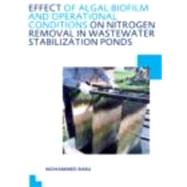- ISBN: 9780415669467 | 0415669464
- Cover: Nonspecific Binding
- Copyright: 5/18/2011
Nitrogen gas is inert in nature but active forms like ammonia, nitrates and nitrous oxides are detrimental to public health and the environment. Ammonia and nitrates are known to cause eutrophication of water bodies while the oxides are greenhouse gases. Nitrogen is getting out of balance due to increased anthropogenic input into the environment. Demand for proteins is high and with the growing population, more fertilizer is being produced. The overall effect of production of more nitrogenous wastes is predicted. Developing nations mostly rely on wastewater stabilization ponds (WSP), which are cost effective and easy to maintain but limited by space requirement. The possibility of optimizing treatment and reducing land requirement in WSP is then paramount. WSPs are known to provide treatment for wastewater but these have several drawbacks which include short- circuiting, limited area for microbial attachment, oxygen limited to upper aerobic layer and large area for construction.This study proposes investigating ways of addressing these issues by use of vertical baffles. It is expected that vertical baffling will reduce short-circuiting, create more area for microbial attachment, and alter wastewater flow from aerobic to anaerobic zones. The overall effect of improving nitrogen removal is anticipated.






